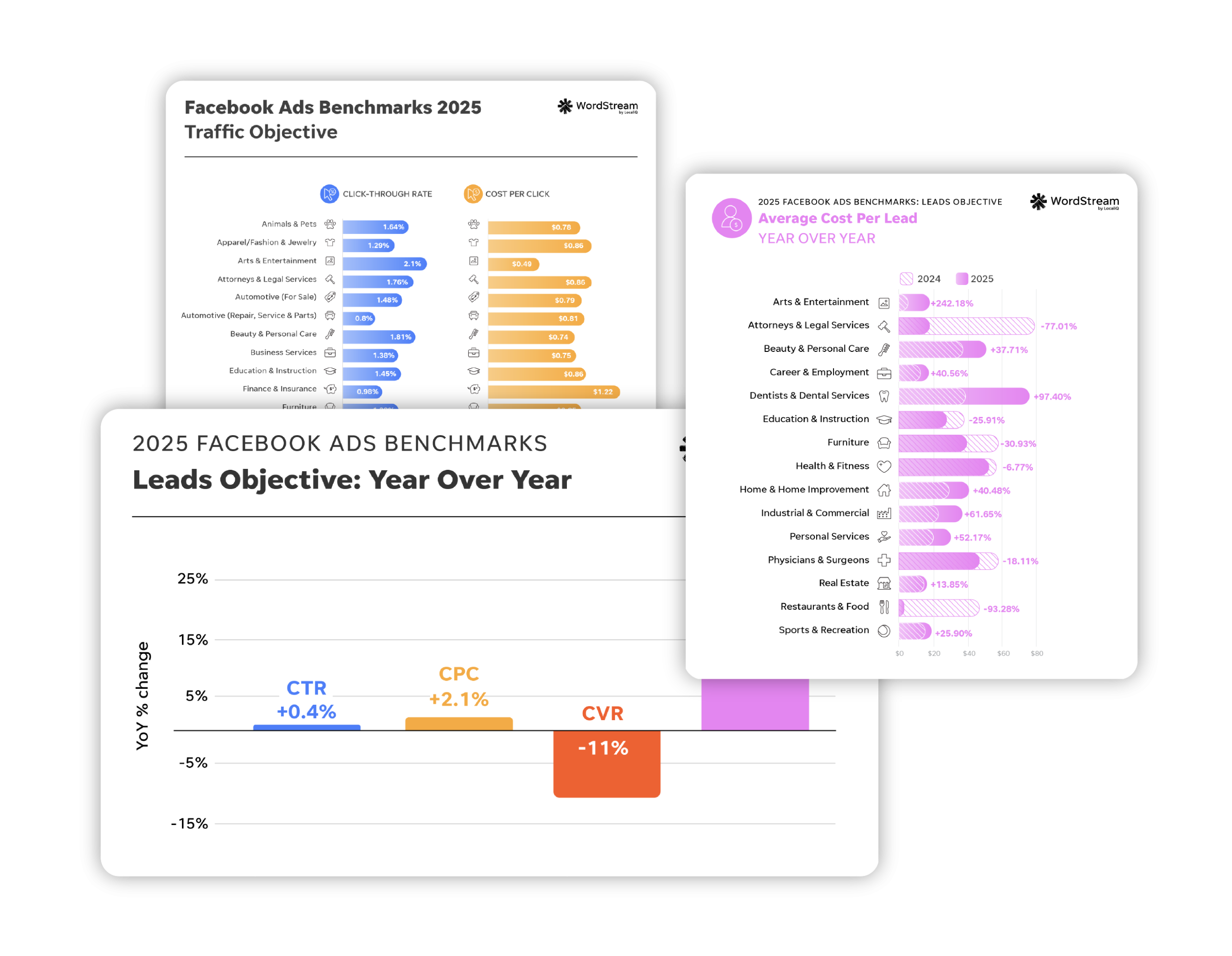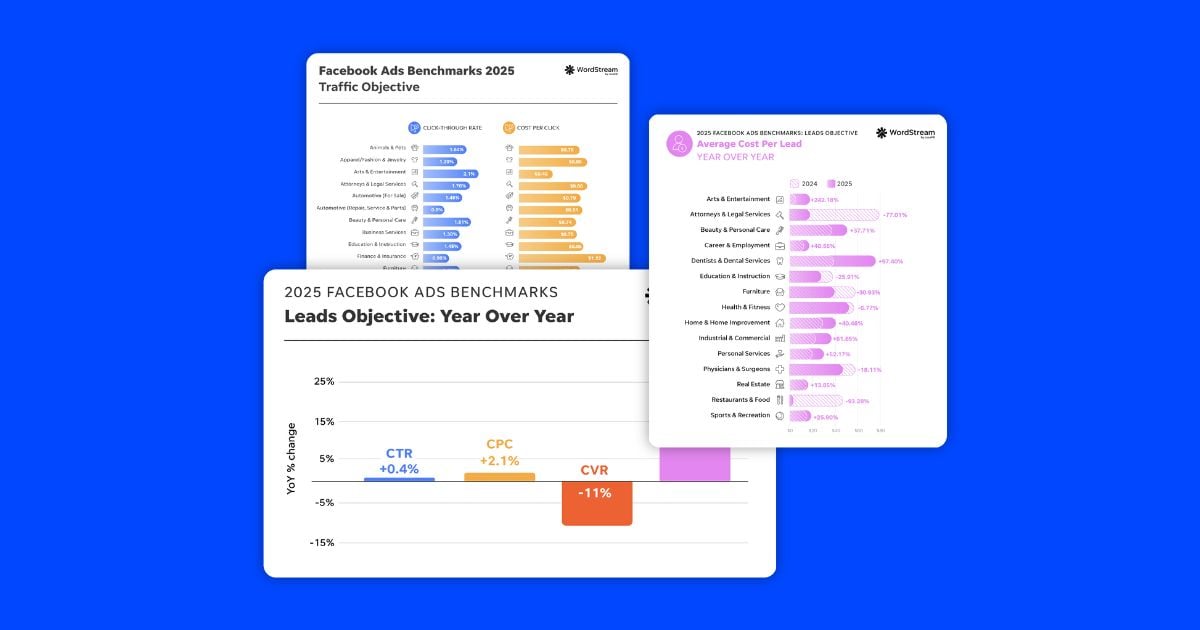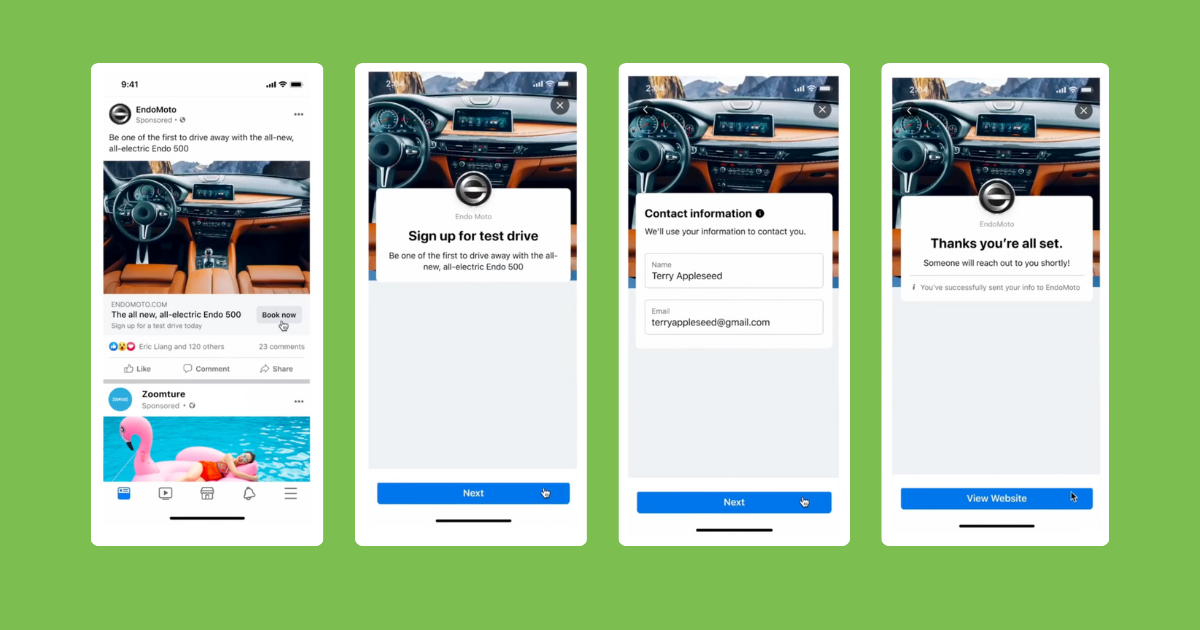Facebook and TikTok are two juggernauts in the world of social media marketing.
These platforms are hugely popular with advertisers around the globe, and that’s not surprising. Both attract colossal audiences, both offer data-driven targeting options, and both are packed with powerful marketing tools.
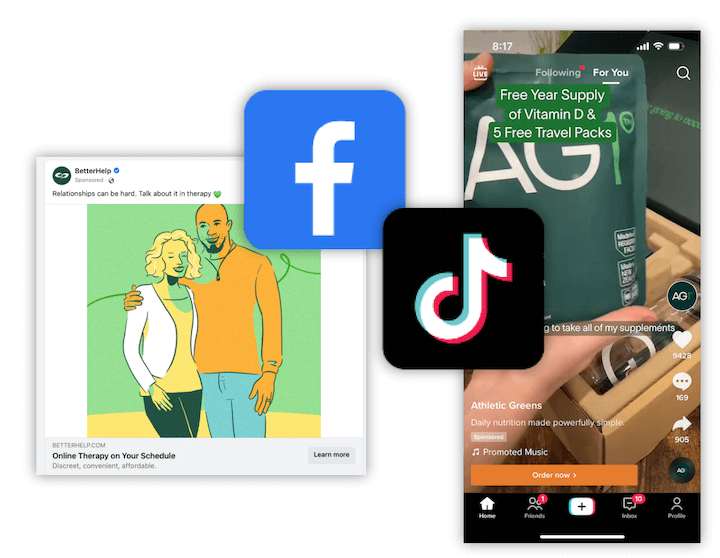
However, if you’re thinking about including Facebook and TikTok in your paid social plans, then you need to understand the key differences between these platforms and how to effectively use both networks together.
In that’s exactly what we’re going to cover in this post! Let’s start with a little introduction to each platform.
Table of contents
- Facebook ads 101
- Tiktok ads 101
- Facebook vs TikTok ads compared
- Tips on using Facebook and TikTok ads together
What are Facebook ads?
Let’s start with a little Facebook advertising 101. Facebook ads are image-based ads with captions that are delivered across the Facebook network.
They can be served in various placements, including Facebook Stories, Facebook Messenger, the Facebook home feed, and more. They’re also available in a wide range of different formats, and these formats are often designed to achieve specific campaign objectives.

For example, while Single Image and Video ads can be great for top-funnel activity, Collection and Advantage+ ads are built to generate clicks and conversions.
One of the biggest strengths of the Facebook advertising platform is its targeting capabilities. Facebook harvests a huge amount of data from its users, which allows advertisers to leverage advanced targeting tactics that can deliver exceptional results.
You can also easily extend Facebook ad campaigns onto the Instagram platform, which is great for securing incremental reach and targeting new audiences.
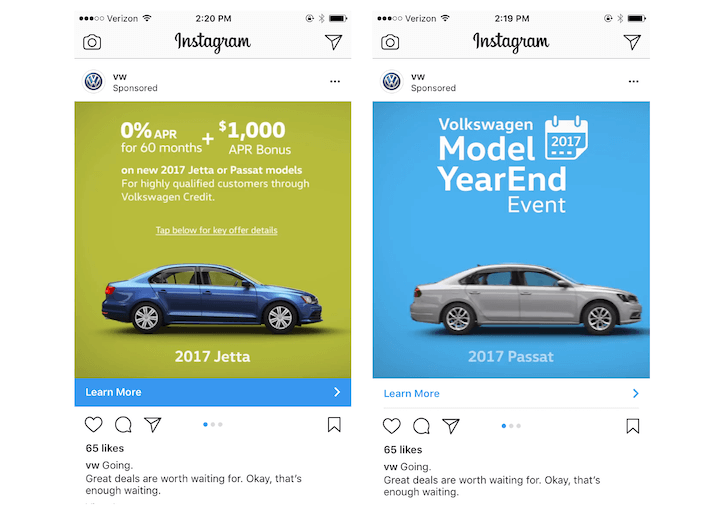
More Instagram ad examples here.
What are TikTok ads?
Now time for some TikTok advertising 101. Like Facebook ads, TikTok ads are also available in a range of different formats.
However, while Facebook ads can appear in several different positions throughout the app (e.g., Reels, Stories, Messenger) the majority of TikTok ads are served in and around the main feed.
Standard TikTok video ads (i.e. In-Feed ads, Top View ads, etc.) are capable of generating huge audience reach and sky-high levels of engagement, which is why they’re popular with both smaller businesses and established corporations (more on why you should advertise on TikTok here).
For brands looking to make a statement on TikTok, formats like Branded Effects and Branded Hashtag Challenges can also be incredibly impactful.
These ads are designed to drive mass user engagement and incremental reach, and many brands have achieved viral fame by utilizing these creative formats.
There’s no doubt TikTok ads can be highly effective for digital advertisers, particularly if you’re able to tap into popular trends (like Stitching) and create content that resonates with your target audience.
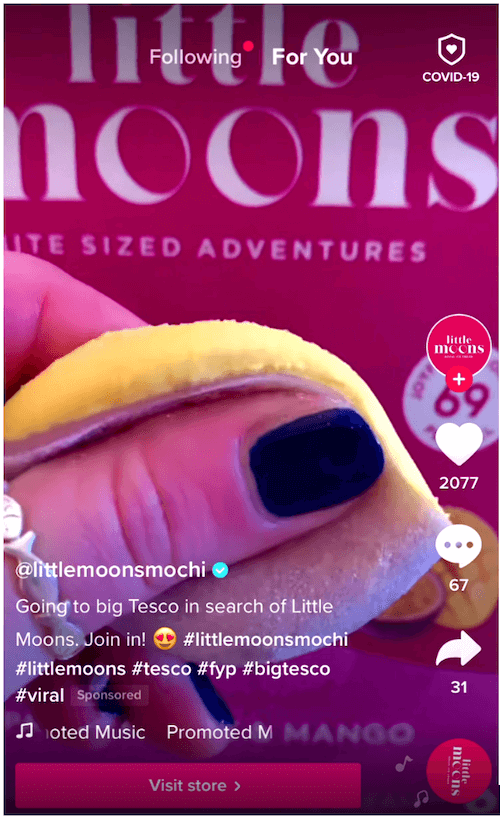
Facebook ads vs TikTok ads: Head to Head
It’s time for a good old-fashioned social media showdown. We’ve done a comparison on TikTok ads vs Instagram Reels ads, now it’s time to compare Facebook and TikTok in a few key marketing areas and see how these paid social powerhouses stack up against one another.
Costs
To kick things off, let’s examine the average costs associated with TikTok ads:
- TikTok average CPM (cost per mille): $10.00
- TikTok average CPC (cost per click): $1.00
For comparison, below are the average costs of Facebook ads:
- Facebook average CPM: $7.00
- Facebook CPC (Cost Per Click) – $1.00
Both platforms are evenly matched when it comes to their average CPC, but Facebook is significantly cheaper than TikTok in terms of CPM. As a result, Facebook takes the victory in this category, enabling brands to achieve more cost-efficient reach.
However, this does come with a caveat.
It’s worth remembering that your campaign costs will be influenced by many factors, including your industry, target audience, ad formats, and bidding strategy. The above figures can be used as a helpful guide, but they’re certainly not written in stone.
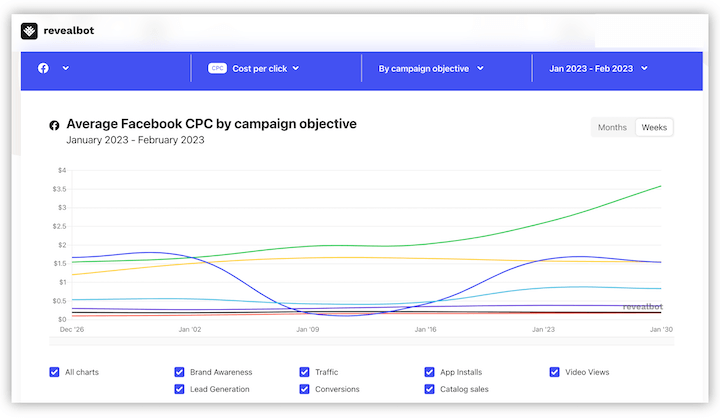
Demographics
Now let’s break down the demographic profiles of the Facebook and TikTok audiences.
TikTok is known for its insane popularity among younger generations, and the data certainly backs this up. A whopping 41.7% of TikTok users fall into the 18-24 bracket – 31% are aged 25-34, while just 24.1% are aged over 35.
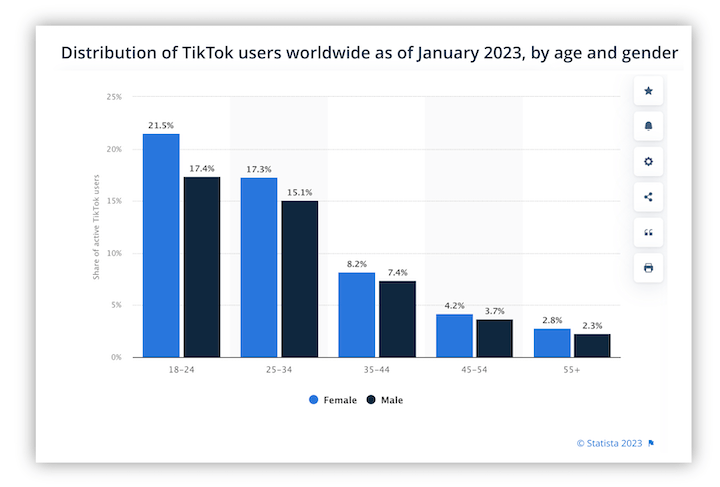
Facebook, on the other hand, attracts a broader mix of age groups. Just 22.6% of the Facebook audience falls under the 18-24 umbrella, while 31% of the user base is aged 25-34, making this the largest segment on the platform.
Older generations are also better represented on Facebook, with 41% of users over the age of 35 compared to just 24.1% on TikTok.
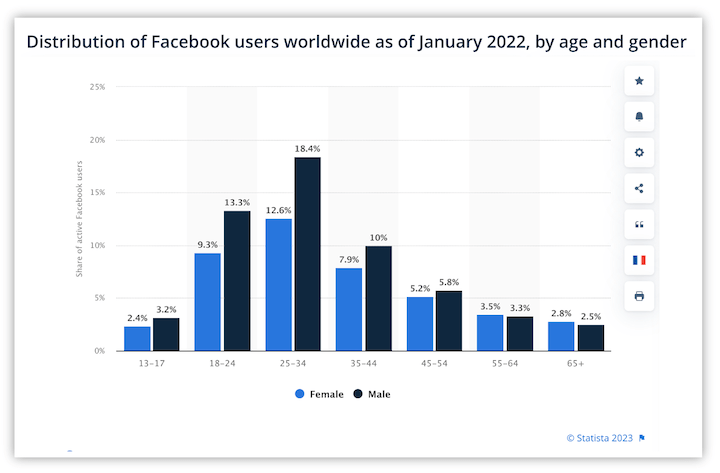
So, what does this mean for marketers?
Well, if you’re interested in targeting Gen Z and younger millennial shoppers, TikTok is the place to be. The platform is massively influential among younger audiences, with data suggesting that 40% of Gen Z prefer using TikTok for searches rather than Google.
For brands less focused on younger generations, Facebook offers a more balanced user base, as well as a significantly higher reach. Facebook boasts around 2.96bn monthly active users, compared to TikTok’s 1.2bn monthly users.
Targeting
Audience targeting is fairly standardized across TikTok and Facebook, with both platforms offering basic options such as:
- Demographic targeting
- Interest targeting
- Behavior targeting
- Device targeting
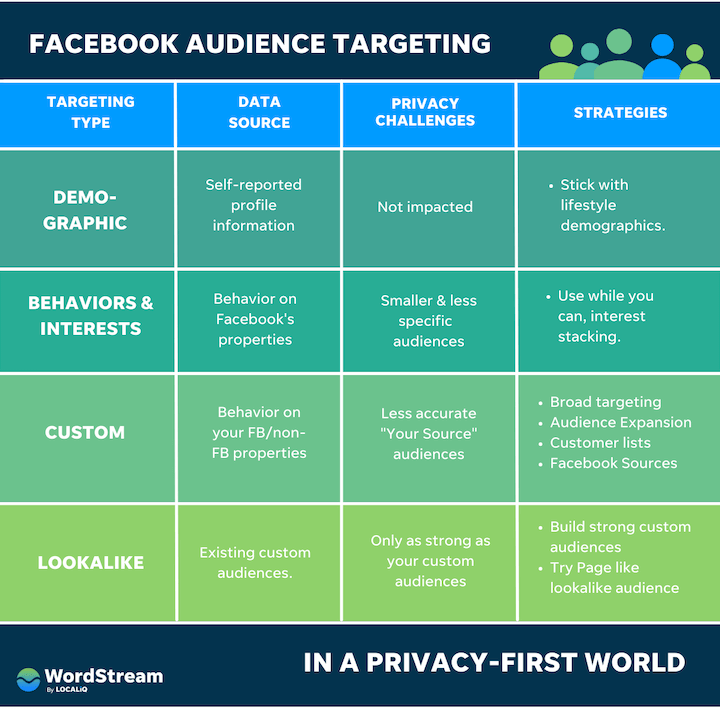
Advertisers can also build pixel data-fuelled Custom Audiences on both TikTok and Facebook, as well as generate Lookalikes based on these segments.
However, the main difference here is that Facebook has been collecting and harnessing audience data for significantly longer than TikTok.
Facebook first introduced its ad platform way back in 2007, while TikTok ads only launched in 2020. That’s a sizable head start for Facebook, meaning the platform has access to a lot more user data and audience insights that can be used to improve campaign performance.
Although TikTok and Facebook offer near-identical targeting options, Facebook has the edge because it’s sitting on a goldmine of historical data. (But we do break down some effective TikTok ads targeting strategies you should try here.)
Formats
TikTok and Facebook both offer a range of versatile ad formats, so let’s compare their offerings head-to-head.
Facebook allows advertisers to utilize the following ad formats:
- Image ads
- Video ads
- Carousel ads
- In-Stream Video ads
- Stories ads
- Collection ads
- Messenger ads
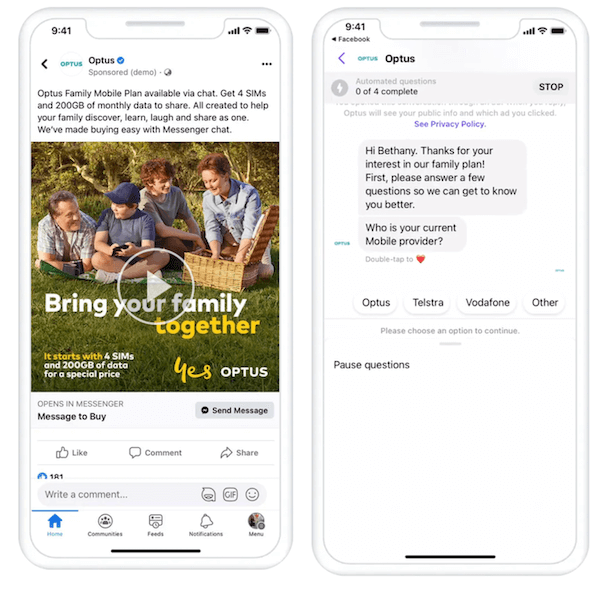 A Facebook Messenger ad example. (Image source)
A Facebook Messenger ad example. (Image source)
Below are the ad formats available on TikTok:
- In-Feed ads
- Top View ads
- Brand Takeover ads
- Branded Hashtag ads
- Branded Effects ads
- Collection ads
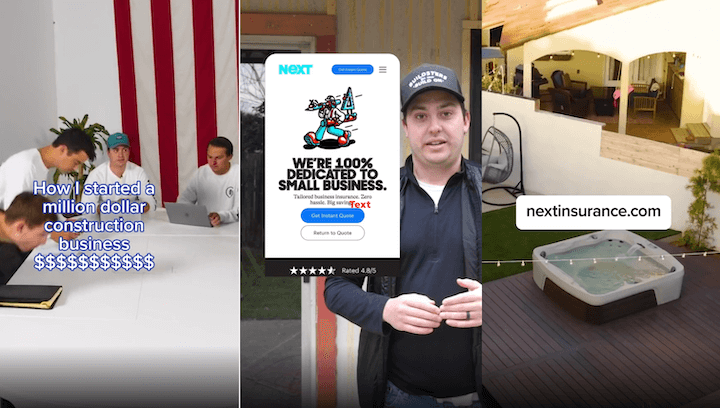
Once again, this category is remarkably close between the two platforms. Both Facebook and TikTok offer ad formats that can be used to achieve specific objectives. For example, In-Feed video ads to build brand awareness, or Collection ads to drive conversions.
The key difference here is that Facebook ads can be served in multiple environments across the app, while the TikTok platform design is more streamlined.
For example, Messenger and Stories ads appear in completely separate sections of the Facebook site, while TikTok ads are delivered in (or around) the home feed.
If you’re keen to test out a broad range of versatile ad formats, Facebook is a great option. However, if you want to maximize visibility, the simpler layout of TikTok may be more appealing.
Analytics
The ability to monitor, analyze, and optimize your paid social ad performance is crucial for success.
So which of these networks is best suited for campaign measurement?
The truth is that Facebook and TikTok are both well-equipped in the analytics department.
As marketing platforms, both Facebook and TikTok are designed to help advertisers achieve optimal results through accurate and accessible analytics. Each platform offers a built-in analytics dashboard (i.e. the Facebook Ads Manager and TikTok Ads Manager) that enables brands to monitor performance, create custom reports, and track conversions.
Beyond basic analytics, Facebook and TikTok also offer additional measurement options, such as Brand Lift studies and the ability to implement a tracking pixel on your website.
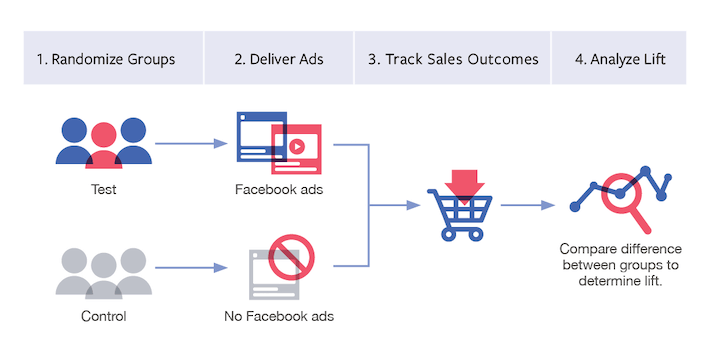
How Facebook ads brand lift studies work. (Image source)
You’ll never struggle to track and analyze your ad performance on either of these platforms, so this category is a clear draw.
🤔 How are your Facebook ads really performing?
Find out with the free Facebook Ads Grader!
How to use Facebook & TikTok ads together
TikTok and Facebook ads together are effective and profitable for businesses old and new, big and small.
Both platforms have their own unique strengths and marketing opportunities, which begs the question: How can you leverage both partners to accelerate your returns?
Let’s explore how you can combine Facebook and TikTok ads to drive optimum performance.
1. Gather & implement insights across platforms
If you want to grow your business in today’s environment, a cross-channel advertising strategy is a must. This means running ads on different channels like search and social, as well as on different platforms within these channels, like on TikTok and Facebook within social.
Running ad campaigns across multiple social media platforms enables you to collect more insights and apply more learnings. Be sure to frequently analyze your campaign reports on both TikTok and Facebook to identify these valuable cross-platform opportunities.
For instance, there may be a high-performing Facebook audience segment that you can replicate on TikTok or an effective creative asset that you can repurpose across platforms.
2. Strengthen your brand identity
I emphasized the importance of solidifying your brand identity in my Facebook trends post and this applies across platforms as well.
To do so, maintain a clear tone of voice across these platforms, use the same branding elements (colors, fonts, imagery, vibes), and regularly interact with your audience on both networks. Consistency is a great way to build trust among consumers, so use both Facebook and TikTok as a launchpad for your brand.
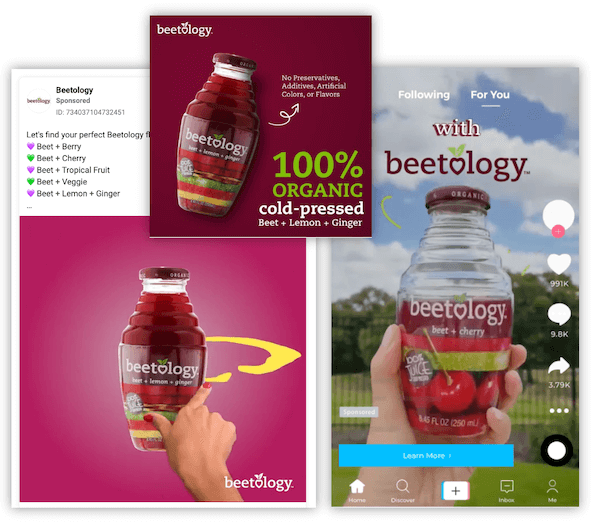
3. Expand your campaign reach
This may sound obvious, but make sure that you’re using Facebook and TikTok to effectively increase your overall reach and frequency.
Both of these networks give you access to unique audiences and specific demographics, so take full advantage of this. Experiment with different target audiences to discover new prospects, and make sure that both platforms have sufficient budget for scaling up (how to scale your Facebook ads here).
Maximize your Facebook & TikTok ad returns
TikTok and Facebook can both deliver outstanding results when used individually, but when these social media giants are combined, the sky’s the limit.
By capitalizing on the strengths of each platform and following some of these best practices, you can transform your paid social marketing into a well-oiled, conversion-driving machine.
Want more? Find out what you need to know about Instagram vs Facebook here.

